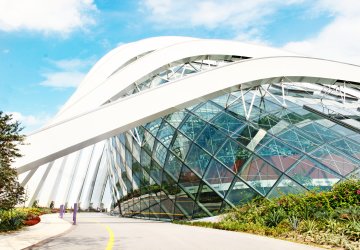Buildings can’t catch COVID-19, but they may end up suffering from it. I say that not to be glib, nor in any way to trivialise the human cost of the current global pandemic. But it is a fact that buildings are complex, dynamic entities that require attention and care in order to function well. And, because of stay-at-home orders that have emptied out offices, shuttered retail establishments and stopped much factory work, our buildings may have some problems when the world begins to emerge from the crisis.
Neglect is a problem for buildings. They may not suffer wear and tear from humans during this time, but they remain subject to natural elements – wind, rain, freeze-thaw cycles – and to vandalism, break-ins and other malicious acts.
Among the things we depend on for maintaining healthy buildings are the eyes, ears, and noses of the occupants, who routinely spot and report problems. A wet floor or a strange odour will attract our attention as we go about our work, and result in incident reports. Without our presence, certain problems may go undetected for periods of time, causing damage and requiring expensive repairs.
Here’s a simple story: A few days after my colleagues and I began working from home, one member of our team went to the office to check the mail. Upon arrival, he noticed the entry floor was covered in water. What happened? It turns out it had rained the day before, and a drain on the patio outside our office had become clogged. Water had built up and entered the building.
Had our office been occupied, this would have been noticed as it happened, and maintenance would have been called immediately. As it was, the rain had stopped and the effects were limited. The problem was easily resolved, and the mess cleaned up with no damage. But suppose the bad weather had gone on longer and nobody had stopped by the office. There could have been more extensive damage, not only to our office but to the tenants downstairs.
An occasional walkthrough by occupants, maintenance staff or cleaners – taking recommended precautions - is one way to minimise the potential for problems like this. But even so, it may be time to think about how we should go about bringing our workspaces back to life and health when the need for isolation has subsided.
Pre-occupancy inspections may be warranted, along with checklists and question sets to ensure that conditions are safe and healthy. Certainly one of the questions that should be answered is whether scheduled maintenance has been performed, or whether there is a need to catch up on health and safety tasks such as HVAC filter changes, fire sprinkler tests, extinguisher inspections, and the like. Has building equipment been serviced during the period of vacancy?
Occupant walkthroughs may be able to spot water damage, burned out lighting (not only in occupied spaces but in stairwells, basements, parking areas, etc.), non-functional plumbing fixtures, emergency exit signs, dusty or dirty conditions and other minor issues. Maintenance teams should catch up, if need be, on inspections of roofs and lifts, testing of plumbing valves and control systems, and proper functioning of major building systems.
Now, while we are away from our workplaces, is the time to plan for re-occupancy. We don’t know everything that will be needed. We may need to think about installing hand sanitiser stations or upgrading cleaning protocols. We may have to rearrange or remove some furnishings to reduce occupant density. But we know what the buildings themselves need to function properly: It’s about their systems, their surfaces, their equipment, and their structures. Some attention now to the re-opening process may ensure they are in good health when we move back in.

